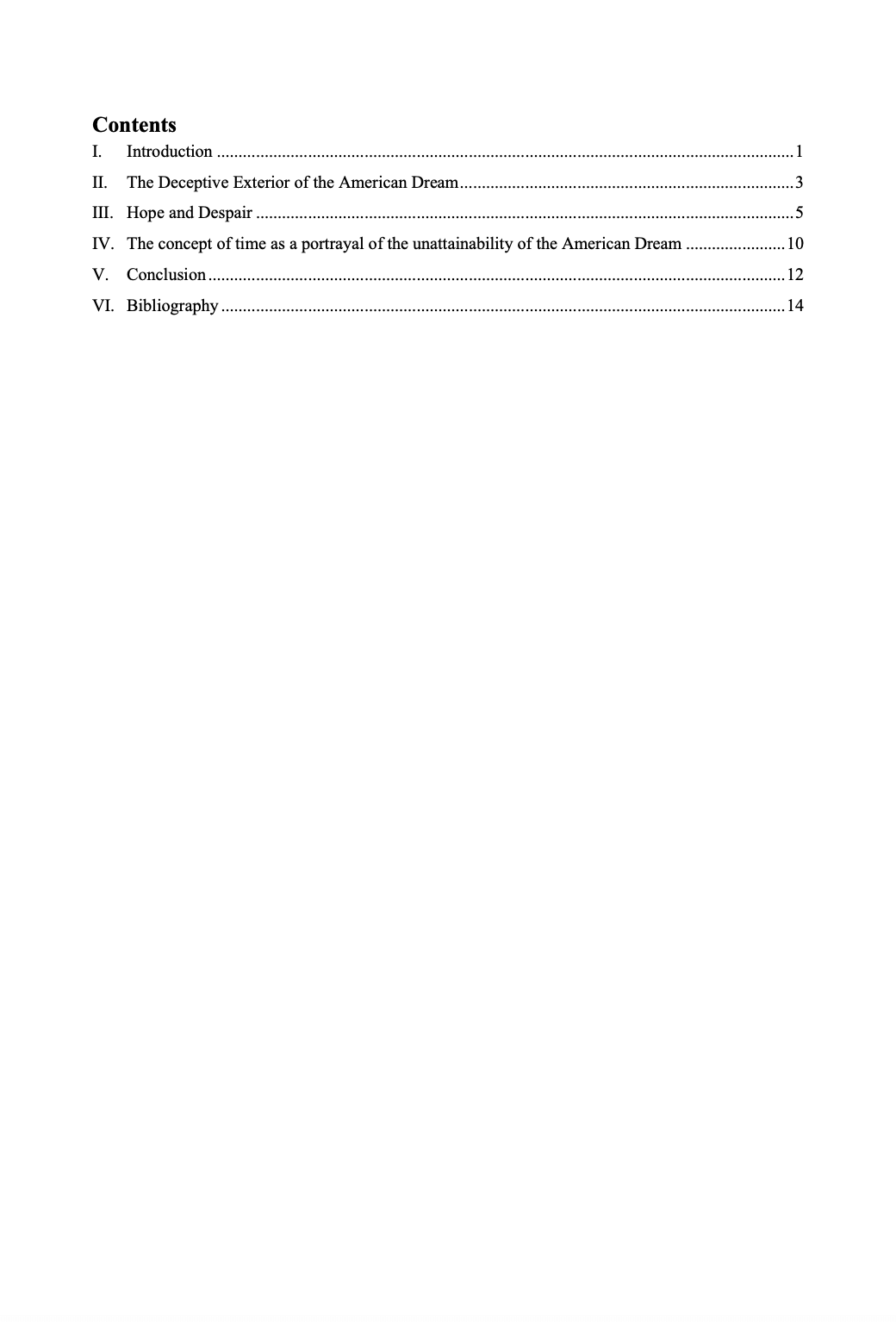Literature analysis: the role of narrative POV in representing the "american dream" in the great gatsby (2000) & the virgin suicides (1993)
The full word count for this paper was 4,598. The paper was submitted as my extended essay, which formed part of my International Baccalaureate curriculum, and was independently graded with ‘High Distinction’.
Abstract
This essay examines the portrayal of the “American Dream” which the authors, F. Scott Fitzgerald and Jeffrey Eugenides, communicate by shaping narrative point of view in The Great Gatsby (2000) and The Virgin Suicides (1993) respectively. Both novels depict a central didactic redefinition of this ideal concept within two important time frames in American History: The Great Gatsby is set in the Golden Twenties and exhibits the corrupt idealism of wealth which prevailed among society, whereas The Virgin Suicides portrays the superficial 1970’s suburban life that was supposed to advocate equality and solidarity.
To explore these aspects of the American Dream in the two eras, primary research was used to answer the research question: What is the role of narrative point of view in representing the American Dream in the novels The Great Gatsby (2000) by Scott F. Fitzgerald and The Virgin Suicides (1993) by Jeffrey Eugenides?
This essay analyses contextual elements in the two novels and the way the writers shape narrative point of view to portray insights into the American Dream, defined as “that dream of a land in which life should be better and fuller for everyone, with opportunity for each according to ability or achievement…”.1
Research and analysis revealed that the writers use the central protagonists, Jay Gatsby and the Lisbon girls respectively, to embody the doomed ideal of the American Dream. The corruption and collapse of the American Dream is represented in Gatsby where his distorted conceptualisation of material wealth ultimately leads to his tragic death. Similarly, in The Virgin Suicides, the girls’ suicides essentially symbolise disorder of the ‘perfect’ suburban life and the downfall of the ideal of the “white picket fence” American Dream.
Therefore, both authors share a cynical view of the American Dream and subversion as an ‘empty promise’ and unachievable illusion.
I. Introduction
The pursuit of the “American Dream” is a prominent theme in the novels, The Great Gatsby (2000) by F. Scott Fitzgerald and The Virgin Suicides (1993) by Jeffrey Eugenides. The former is set in the 1920s, or ‘the Roaring Twenties’ which was known as ‘an era of consumerism’ for those who were prosperous in that time.2 Much of society aspired for upward mobility in status and wealth as represented by Gatsby: the exemplary ‘self-made man’.3 Through ostentation, the protagonist strives to pursue the female character, Daisy Buchanan, who figuratively embodies the completing pinnacle to his success. The Virgin Suicides, on the other hand, is set in a later 1970s in an affluent, isolated suburb. Throughout this period, the concept of “the perfect family” and “a home with a white picket fence” connoted the American ideal of equality and virtuous happiness. However, this image of a perfect and orderly suburban life collapses after the quintuple suicide of the Lisbon sisters, unveiling a darker side to the American Dream. In fact, both works reveal an underlying superficiality of the American Dream opposed to its outward glamour and promising happiness. Fitzgerald and Eugenides re-examine and critique the concept by shaping the first-person peripheral narrative point of view as an extended allusion, which leads to the research question:
What is the role of narrative point of view in representing the American Dream in the novels The Great Gatsby (2000) by Scott F. Fitzgerald and The Virgin Suicides (1993) by Jeffrey Eugenides?
Two works touching upon the theme of the American Dream, but set in different historical eras, provides a valid topic for research. Comparing the use of narrative point of view reveals insights into the ways the writers have shaped their representation of the American Dream.
An examination of a classic “American Dream” work, such as The Great Gatsby, in comparison to a contemporary view of the American Dream in The Virgin Suicides provides a better understanding of its evolution and demise. The early concept of the American Dream is defined as ‘that dream of a land in which life should be better and fuller for everyone, with opportunity for each according to ability or achievement… not a dream of motor cars and high wages merely, but a dream of social order in which each man and each woman shall be able to attain to the fullest stature of which they are innately capable’:4 a communal aspiration that advocates a hope towards achievement and ‘fulfilment of human wishes and desires’.5
The authors’ use of narrative point of view is shown to be shaped as relative in a critical representation of the American Dream. Nick Carraway, in The Great Gatsby, offers a foreigner’s account of a corrupt and materialistic society distorted by an idealism of wealth and social position. The Virgin Suicides, on the other hand, conveys a contemporary and adolescent view in admiration of the Lisbon girls as a reflection of the flawed suburban life which was meant to represent the idealistic American community.6 Stylistic similarities in the two novels portray the American Dream in a satirical tone, conveying it as corrupt and distorted by status, material wealth and a superficial conceptualisation of fulfilment. In turn, the two works compel the reader to question the achievability and definition of the American Dream.
Library of congress, n.d, The American Dream, <http://www.loc.gov/teachers/classroommaterials/lessons/american-dream/students/thedream.html> ↩︎
BBC, 2014, The Roaring Twenties, <http://www.bbc.co.uk/schools/gcsebitesize/history/mwh/usa/1920srev1.shtml> ↩︎
Caldwell, W., 2007, Cynicism and the Evolution of the American Dream, Potomac books, Dulles, < http://books.google.com.au/books?id=a3Pt6kgyyuUC&printsec=frontcover#v=onepage&q&f=false> ↩︎
Library of congress, n.d, The American Dream, <http://www.loc.gov/teachers/classroommaterials/lessons/american-dream/students/thedream.html> ↩︎
Mankel, M., 2009, The American Dream: A historical overview, <http://mankel.free.fr/AmericanDream/historical_overview.html> ↩︎
Kirby, L., n.d, Interrogating suburbia in The Virgin Suicides, <http://rapidintellect.com/AEQweb/cho3350w6.htm> ↩︎
To discuss this fun little paper further, please get in touch!




